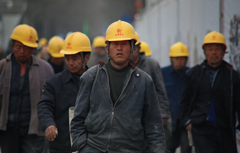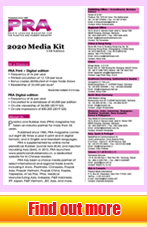Country Focus: Asia responds to global economic emergency
The coronavirus pandemic has brought out the best and worst of economies: it has exposed the inadequacy or lack of systems in governance to address the needs of the different sectors and industries. For one, it is a good thing; on the other hand, it may lead to a longer coping curve from the anticipated global recession from Covid-19, says Angelica Buan in this report.
At the threshold of a global recession

Panic to contain the spread of the coronavirus may soon be of no match to the panic to wrestle against an impending global recession. And the dread is not without basis.
China, the world’s second largest economy (after the US) and touted as the world’s factory has slowed its economic activities as it strictly contained the virus; and the aftermath is rather sombre, according to some analysts.
IHS Markit, in a recent report, forecasts China’s growth to post a measly 2% in 2020, following a near double-digit decline in economic activity in the first quarter of the year. Though it is expected to rebound in 2021, as the country slowly recuperates from the onslaught of the virus, the impact of its earlier dilemma on its trade spat with the US, the world’s largest economy and China’s largest trading partner, will trail behind.
The International Monetary Fund (IMF) anticipates the rest of the year to be challenging for China. The slowdown during the first quarter, has disrupted industrial production and retail sales, and curbed supply and demand.
Furthermore, IMF has said the coronavirus impact is more severe and vastly spread compared to the global financial crisis in 2007-2008, as it has hit households, businesses, financial institutions, and markets all at the same time in China and globally.
Exodus from China: high level of uncertainty
Before Covid-19, the US-China trade war, which started as early as 2018 and eventually scaled up with tariffs to include more products, especially imported products from China, has caused bumps in the latter’s economy.

The UN Conference in Trade and Development (UNCTAD) cited in a research paper published in November 2019 that the US tariffs resulted in 25% loss to Chinese tariffed exports in the US market in the first half of 2019. Although tensions eased slightly between the trading partners this year with the US offering an olive branch to China, the situation had already signalled several companies to pull their production out of China.
UNCTAD says that China has become less lucrative for some businesses, ranging from electrical and electronics and white goods to consumer goods and tyres, which have started exiting the country to set up camp elsewhere. It said, “of the US$35 billion Chinese export losses in the US market, about US$21 billion, or 63% , was diverted to other countries, while the remainder of US$14 billion was either lost or captured by US producers”.
Other countries that gained from the trade diversions include Taiwan, which at the time of the UNCTAD analysis scored US$4.2 billion in additional exports to the US in the first half of 2019, by selling more office machinery and communication equipment.
Vietnam has cornered the communication equipment and furniture supply gap, and increased its exports to the US by US$2.6 billion.
Meanwhile other Asian countries, South Korea and India, along with North American compeer Canada, gained between US$0.9 billion to US$1.5 billion. The European Union, meanwhile, netted US$2.7 billion in increased exports, largely in the machineries sectors.
China’s pre-Covid-19 situation, marked by a slowdown in economic growth as well as the impact of the trade war, has raised a level of uncertainty among foreign businesses based in the country.

For example, in a survey conducted by the British Chamber of Commerce among 249 British companies based in China, with a combined annual revenue crossing US$29 billion, suggested souring perception among a majority of the respondents. They say they were challenged with state regulations, competition from state-owned enterprises (SOEs), labour costs and the global economic activity situation, which weighed heavily on their business activities.
The survey reported that a quarter of the respondents from the various sectors raised the issue of unequal treatment from the Chinese government, in lieu of the SOEs, which account for 40% of the total number of enterprises. Confidence in doing business in China in 2020 fell more than ten notches, from 65% to 54%, compared to the 2018 outlook.
Meanwhile, German businesses in China, polled in the annual Business Confidence Survey conducted by the German Chamber of Commerce in China, in cooperation with KPMG AG Germany, raised the issue of the challenging regulatory environment. This they say has limited their growth potential. The survey also noted a decrease in the automotive and machinery/industrial equipment sectors.
(PRA)
Subscribe to Get the Latest Updates from PRA Please click here
©2020 Plastics and Rubber Asia. All rights reserved.

©2020 Plastics and Rubber Asia. All rights reserved.
Home Terms & Conditions Privacy Policy Webmail Site Map About Us

















